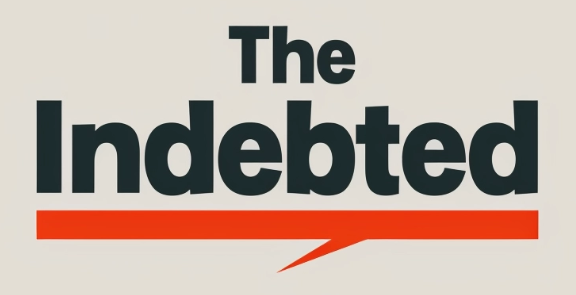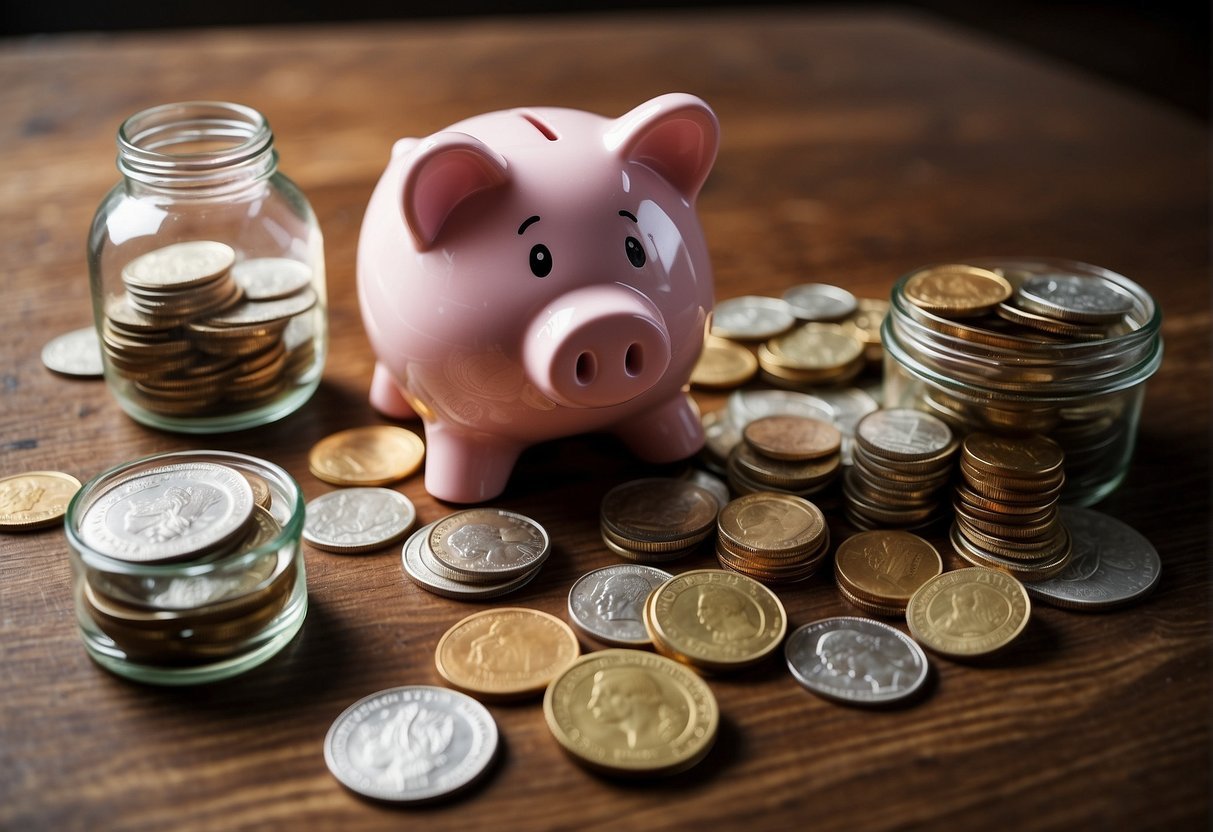If you’re struggling with debt repayment, you’re not alone. Many people find themselves in debt for various reasons, including student loans, credit card debt, or unexpected medical bills. Getting out of debt can be a long and challenging journey, but it’s not impossible. One of the most effective ways to pay off debt is by finding creative ways to save money.
There are many ways to save money, but some of the most creative ones require a bit of effort and planning. For example, you can save money on groceries by meal planning, buying in bulk, and using coupons. You can also save money on utilities by turning off lights and appliances when not in use, using energy-efficient light bulbs, and installing a programmable thermostat. By making small changes to your daily habits, you can save a lot of money over time.
Another way to save money is by finding ways to earn extra income. You can sell items you no longer need, take on freelance work, or start a side hustle. By earning extra money, you can put more towards your debt repayment and reach your goals faster. With a little creativity and effort, you can find many ways to save money and pay off your debt.
Understanding Debt and Repayment Strategies
As someone who has dealt with debt repayment, I understand how overwhelming it can be. However, it’s important to assess your debt and choose the right repayment method to get back on track. In this section, I will go over some ways to understand your debt and choose a repayment strategy that works for you.
Assessing Your Debt
The first step in tackling your debt is to assess your current financial situation. This includes taking stock of all your outstanding debts, including credit cards, loans, and any other financial obligations. Make a list of all your debts, including the amount owed, the interest rate, and the minimum monthly payment.
Once you have a clear picture of your debt, you can start to prioritize which debts to pay off first. One popular strategy is the snowball method, where you focus on paying off the smallest debt first and then move on to the next smallest debt. Another strategy is the avalanche method, where you focus on paying off the debt with the highest interest rate first and then move on to the next highest interest rate.
Choosing a Repayment Method
Once you have assessed your debt, it’s time to choose a repayment method that works for you. One option is to create a payment plan, where you make a budget and allocate a certain amount of money each month towards paying off your debt. This can be a helpful way to stay on track and make consistent progress towards paying off your debt.
Another option is to consider debt consolidation, where you combine all your debts into one loan with a lower interest rate. This can make it easier to manage your debt and potentially save you money on interest payments.
Ultimately, the key to choosing a repayment method is to find one that works for you and your financial situation. Whether you decide to create a payment plan or consolidate your debts, the most important thing is to stay committed to your repayment strategy and make consistent progress towards becoming debt-free.
Creating a Solid Budget Plan
As someone who is looking to pay off debt, creating a budget plan is a crucial step towards achieving financial freedom. A budget plan helps you track your income and expenses, set a savings goal, and ultimately, make a budget that works for you.
Tracking Your Income and Expenses
The first step in creating a solid budget plan is tracking your income and expenses. This involves keeping a record of all the money you earn and spend. You can do this manually using a notebook or spreadsheet, or you can use budgeting apps like Mint or YNAB.
When tracking your income, make sure to include all sources of income, including your salary, side hustles, and any other sources of income. When tracking your expenses, make sure to include all your expenses, including fixed expenses like rent and utilities, as well as variable expenses like groceries and entertainment.
Setting a Savings Goal
Once you have a clear picture of your income and expenses, the next step is to set a savings goal. A savings goal is the amount of money you want to save each month towards your debt repayment plan. This can be a fixed amount or a percentage of your income.
When setting a savings goal, make sure it is realistic and achievable. You don’t want to set a goal that is too high and end up falling short every month. At the same time, you don’t want to set a goal that is too low and not make any significant progress towards your debt repayment plan.
To help you achieve your savings goal, you can create a savings plan. A savings plan is a plan that outlines how you will save the money you need to achieve your savings goal. This can include cutting back on expenses, finding ways to increase your income, or a combination of both.
By tracking your income and expenses and setting a savings goal, you can create a solid budget plan that will help you pay off your debt and achieve financial freedom.
Cutting Expenses to Boost Savings
When it comes to paying off debt, one of the most effective strategies is to cut expenses and save money. Here are some creative ways to cut back on expenses and boost your savings:
Eliminating Unnecessary Subscriptions
One of the easiest ways to save money is to eliminate unnecessary subscriptions. Take a look at your monthly bills and identify any subscriptions that you don’t use or need. This could be anything from a magazine subscription to a streaming service. Cancel these subscriptions and put the money you save towards debt repayment.
Smart Grocery Shopping
Grocery shopping can be a significant expense, but there are ways to save money without sacrificing quality. Start by making a list and sticking to it. Avoid impulse purchases and opt for store-brand items instead of name-brand products. You can also save money by buying in bulk and planning meals around ingredients that are on sale.
Reducing Utility Bills
Utility bills can add up quickly, but there are ways to reduce these expenses. Start by turning off lights and electronics when they’re not in use. You can also save money by adjusting your thermostat a few degrees and taking shorter showers. If you’re looking for more significant savings, consider switching to energy-efficient appliances or installing a programmable thermostat.
By cutting expenses and finding ways to save extra cash, you can put more money towards debt repayment and achieve financial stability.
Increasing Income
When it comes to paying off debt, increasing your income can be a game-changer. Here are two ways to make more money to put towards your debt:
Pursuing Side Hustles
One way to increase your income is to pursue a side hustle. A side hustle is a part-time job or gig that you do outside of your regular paycheck. There are many different types of side hustles you can pursue, depending on your skills and interests. Some popular side hustles include:
- Freelance writing or graphic design
- Pet-sitting or dog-walking
- Renting out a spare room on Airbnb
- Driving for Uber or Lyft
- Selling items on Etsy or eBay
By pursuing a side hustle, you can earn extra money to put towards your debt repayment. Plus, side hustles can be a great way to explore your passions and interests outside of your regular job.
Maximizing Your Skillset
Another way to increase your income is to maximize your skillset. If you have a particular skill or expertise, you may be able to earn more money by leveraging that skill. For example:
- If you’re a teacher, you could offer tutoring services on the side.
- If you’re a graphic designer, you could offer design services to small businesses.
- If you’re a writer, you could offer copywriting or editing services.
By maximizing your skillset, you can earn more money without taking on a second job. Plus, you’ll be able to showcase your expertise and build your professional network.
Remember, increasing your income is just one piece of the puzzle when it comes to paying off debt. It’s important to also focus on reducing your expenses and creating a budget that works for you. By combining these strategies, you’ll be well on your way to becoming debt-free.
Smart Financial Habits
As I worked towards becoming debt-free, I realized that developing smart financial habits was crucial. Here are two habits that helped me save money while paying off my debt.
Using Credit Wisely
Credit cards can be a double-edged sword. On one hand, they can be useful for building credit and earning rewards. On the other hand, they can lead to high-interest debt if not used responsibly. To use credit cards wisely, I followed these tips:
- Pay off the balance in full every month. This avoids paying interest and helps improve my credit score.
- Choose a rewards card that fits my spending habits. I opted for a cash-back card that offered rewards on groceries and gas, as those were my biggest expenses.
- Monitor my credit score and report. I checked my credit score regularly to ensure it was improving and reviewed my credit report for any errors.
By using credit wisely, I was able to earn rewards and improve my credit score while avoiding high-interest debt.
Leveraging Savings Accounts
While paying off debt, it can be tempting to put all extra money towards debt repayment. However, it’s important to have a safety net in case of emergencies. To build up my savings while still paying off debt, I followed these tips:
- Set up automatic transfers to a savings account. I set up automatic transfers from my checking account to my savings account every month to make saving a habit.
- Choose a high-yield savings account. I researched and found a savings account with a higher interest rate than my previous account, which helped me earn more on my savings.
- Use savings to pay off debt strategically. I used some of my savings to pay off high-interest debt, which helped me save money on interest in the long run.
By leveraging savings accounts, I was able to build up my emergency fund while still making progress on debt repayment.




